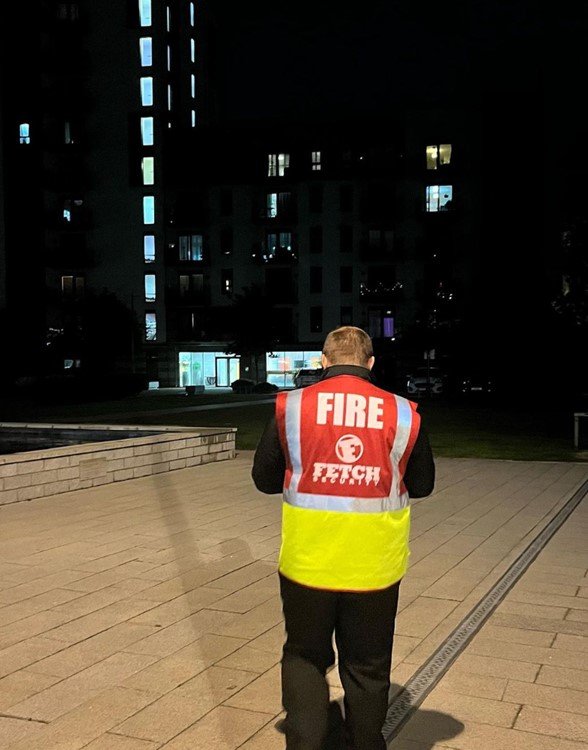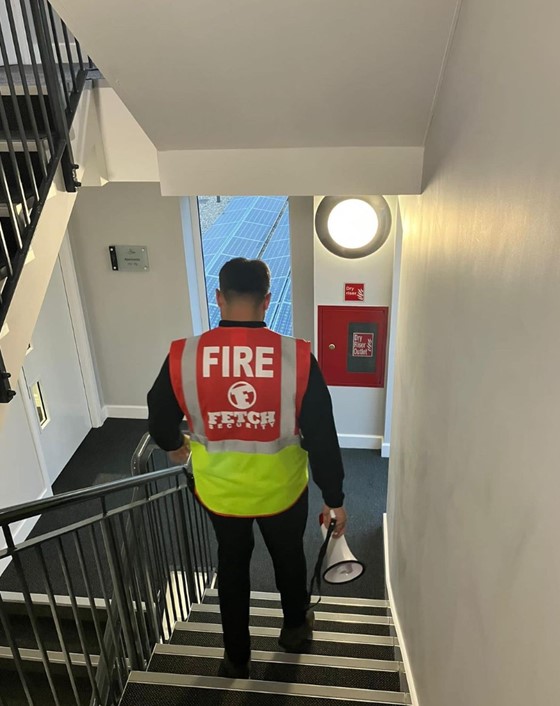Waking Watch
After the tragic events of the Grenfell tower fire, it highlighted that many high-rise properties across the UK were fitted with dangerous exterior cladding and this in turn required additional fire safety measures to be put in place by all those affected.
The Waking Watch was implemented to help change the existing ‘stay put’ advice that was given to residents when there was a fire to a temporary simultaneous evacuation strategy.
Waking Watch services involve suitably persons to patrol all floors along with the exterior perimeter of the building to detect a fire, raise the alarm, and carry out the role of evacuation management.
If the waking watch identifies or is informed of a fire situation, they will attend immediately, assess the situation, and if required will call the Fire and Rescue Service. They will support residents to evacuate and will liaise with the Fire and Rescue Service on their arrival.
While a waking watch is a costly measure to introduce, it is sometimes used as a short-term mitigation measure while remediation works are taking place on a building.
When is a waking watch required?
In August 2022, the National Fire Chiefs Council (NFCC) and other industry partners published the fourth edition of the Simultaneous Evacuation Guidance (SEG), replacing the third edition which was published in October 2020. When it comes to SEG, the NFCC states that:
‘If a building has been identified as high risk because of an unsuitable external wall system, or other fire safety defects, interim fire safety arrangements can be adopted for the temporary, short-term management and mitigation from fire risks, and the risk to life if a fire occurs.’
‘These arrangements can range from simple steps to remove potential ignition sources that might give rise to a fire, through to a change in the evacuation strategy for a building, moving from Stay Put to Simultaneous Evacuation supported by the installation of common fire alarms and/or a waking watch.’
Where fire safety issues have been identified on a building, and the responsible person has recognised that a switch from a Stay Put strategy to SEG is needed, a short-term mitigation measure such as a waking watch is sometimes recommended to aid simultaneous evacuation while other interim measures such as a fire alarm system (first aid fire alarm system) are being installed.
The NFCC guidance recommends that:
‘Where a waking watch is implemented, as soon as practicable but within a month, the Responsible Persons should plan for implementing sustainable means for supporting the evacuation strategy to allow the building to transition away from a waking watch. Such a plan should include details such as costings, timeframes, a resident engagement strategy, and relevant procurement processes. In the immediate and transitional term, this plan could include the installation of a first aid fire alarm system.’
Why chose Fetch Fire & Security Ltd?
Our fire marshals are all off duty frontline serving fire fighters.
Fire fighters know what to look for on patrols, how people act in panic, how fires act, how buildings are constructed and meant to act in a fire situation, what to look for on fire alarm panels, what life saving information to give 999 and fire crews on arrival and so many more the list is endless, along with being trained in the latest equipment that is now being installed in high rise buildings like the EACIE’s (Evacuation Alert Control Indicating Equipment).








